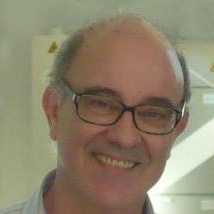Molecular Mechanisms and Pathophysiology of Ischemia-Reperfusion Injury 2.0
A special issue of International Journal of Molecular Sciences (ISSN 1422-0067). This special issue belongs to the section "Molecular Pathology, Diagnostics, and Therapeutics".
Deadline for manuscript submissions: closed (10 February 2020) | Viewed by 77657
Special Issue Editors
Interests: organ (liver, pancreas, small intestine, kidney) transplantation; cell signaling molecular mechanisms in organ transplantation; graft therapeutics; preservation and preservation solutions
Special Issues, Collections and Topics in MDPI journals
Interests: liver cancer; liver metastases; liver surgery; liver transplantation; ischemia–reperfusion; liver preservation; machine perfusion; liver graft dysfunction
Special Issues, Collections and Topics in MDPI journals
Special Issue Information
Dear Colleagues,
This Special Issue is a continuation of our previous Special Issue “Molecular Mechanisms and Pathophysiology of Ischemia-Reperfusion Injury”.
This Special Issue calls for original research, reviews, and perspectives that address the progress and current knowledge on the pathophysiological mechanisms of IRI, including but not limited to the following topics:
- Heart and stroke; liver; pancreas; kidney; intestine;
- Warm ischemia and reperfusion injury;
- Organ transplantation (cold ischemia-reperfusion injury);
- Organ preservation solutions, organ machine perfusion techniques (kidney and liver), inflammation, immunology, and trophic factors, autophagy, apoptosis;
- Mitochondrial and related markers and therapeutic strategies (i.e., plants and drugs) to prevent ischemia-reperfusion injury.
Prof. Dr. Joan Rosello-Catafau
Prof. Dr. René Adam
Guest Editors
Manuscript Submission Information
Manuscripts should be submitted online at www.mdpi.com by registering and logging in to this website. Once you are registered, click here to go to the submission form. Manuscripts can be submitted until the deadline. All submissions that pass pre-check are peer-reviewed. Accepted papers will be published continuously in the journal (as soon as accepted) and will be listed together on the special issue website. Research articles, review articles as well as short communications are invited. For planned papers, a title and short abstract (about 100 words) can be sent to the Editorial Office for announcement on this website.
Submitted manuscripts should not have been published previously, nor be under consideration for publication elsewhere (except conference proceedings papers). All manuscripts are thoroughly refereed through a single-blind peer-review process. A guide for authors and other relevant information for submission of manuscripts is available on the Instructions for Authors page. International Journal of Molecular Sciences is an international peer-reviewed open access semimonthly journal published by MDPI.
Please visit the Instructions for Authors page before submitting a manuscript. There is an Article Processing Charge (APC) for publication in this open access journal. For details about the APC please see here. Submitted papers should be well formatted and use good English. Authors may use MDPI's English editing service prior to publication or during author revisions.
Keywords
- ischemia-reperfusion injury (heart, liver, pancreas, kidney, intestine)
- organ transplantation
- static cold storage and dynamic/machine perfusion graft preservation
- inflammation/autophagy/apoptosis mediators
- mitochondrial disfunction and markers
- pharmacological strategies to prevent IRI
- ischemic preconditioning and postconditioning







